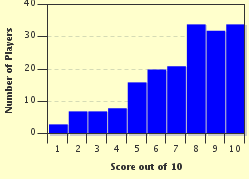Quiz Answer Key and Fun Facts
1. We all know that the Earth is locked into orbit around the sun thanks to gravity, but exactly how far does the force of gravity go?
2. Speaking of gravity, what is the name for an object with so much mass that the gravitational force is generally believed to be too great to allow anything, even light, to 'escape'?
3. This unit of measurement is most commonly used when talking about things on the galactic scale, and is equal to about 3.26 light-years. In the film 'Star Wars', it was incorrectly referred to as a unit of time, rather than distance. What is it?
4. Using complicated math and sophisticated tools, we can measure how quickly the universe is expanding. It is going much faster than we thought it would, and to explain the difference scientists have introduced what mysterious substance? (Hint: the name reflects the fact that it is still very mysterious)
5. Due to the Doppler effect, light from a moving object is affected by that motion, resulting in the wavelength either increasing or decreasing. What is it called when the object is moving away from us, causing the wavelength to increase? (Hint: think about the visible spectrum)
6. Although an atom with orbiting electrons may look like a galaxy, they are very different systems operating under different rules. Which statement illustrates a significant difference between the two?
7. Credited to Werner Heisenberg, there is a principle that states that it is impossible to perfectly know both the position and momentum of a particle. What is the name of this unavoidable rule of quantum physics?
8. Often referred to as "spooky action at a distance", two particles that interact in a certain way and are then separated can remain linked. Later, a measurement of one particle can affect the other instantly, no matter how far apart they are. What is this called?
9. In our everyday life, a ball pushed with too little force will never make it up a steep hill, no matter how many times we try. In the quantum world, what process would allow a particle to simply go through the hill and appear on the other side?
10. Even though there are a huge number of differences between the galactic and quantum scales, there is a hypothesis which states that they are repeated layers of reality and are actually very similar in a number of surprising ways. Based on fractals, what is the name of this concept?
Source: Author
foozalish55
This quiz was reviewed by FunTrivia editor
CellarDoor before going online.
Any errors found in FunTrivia content are routinely corrected through our feedback system.

